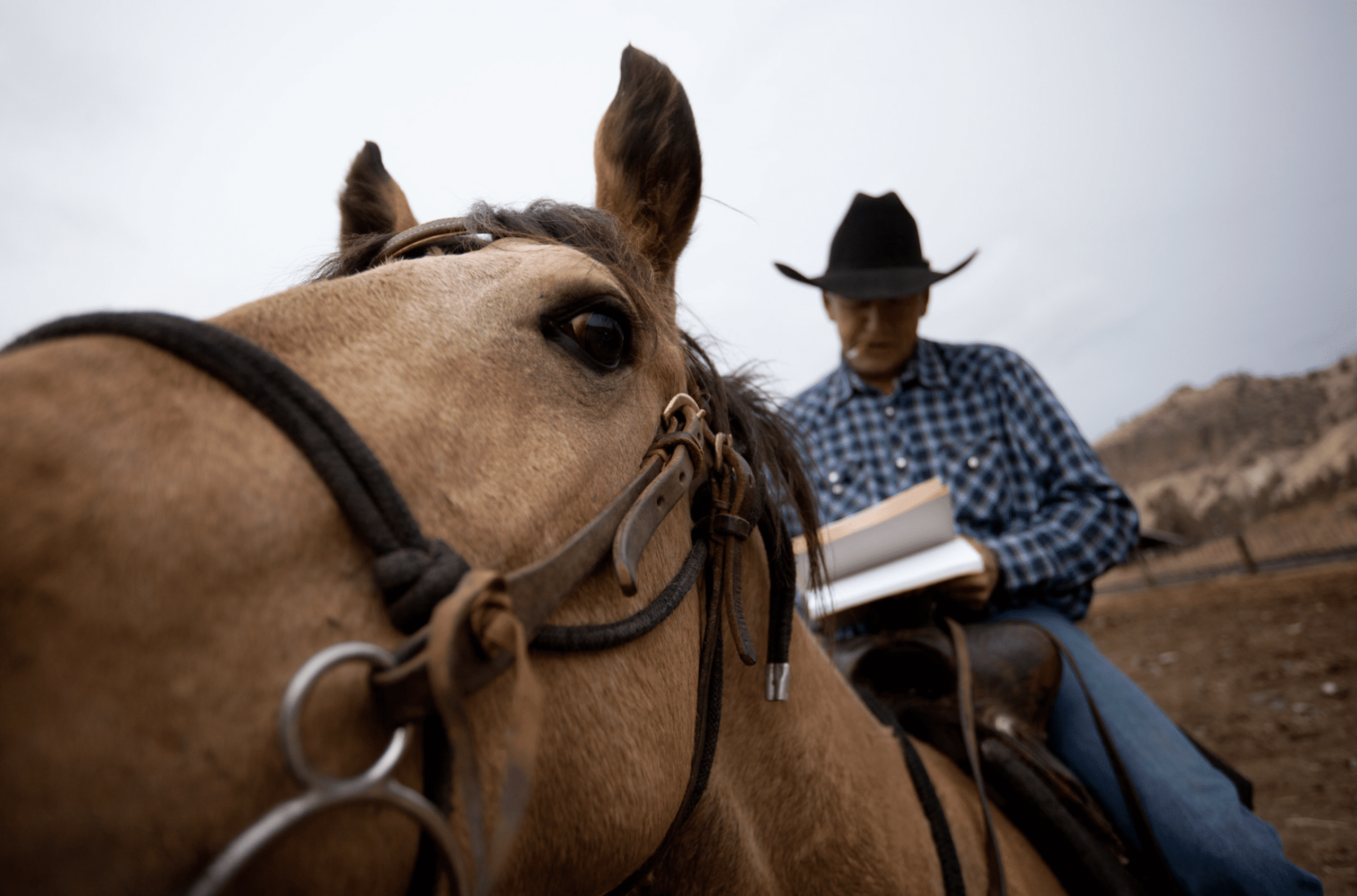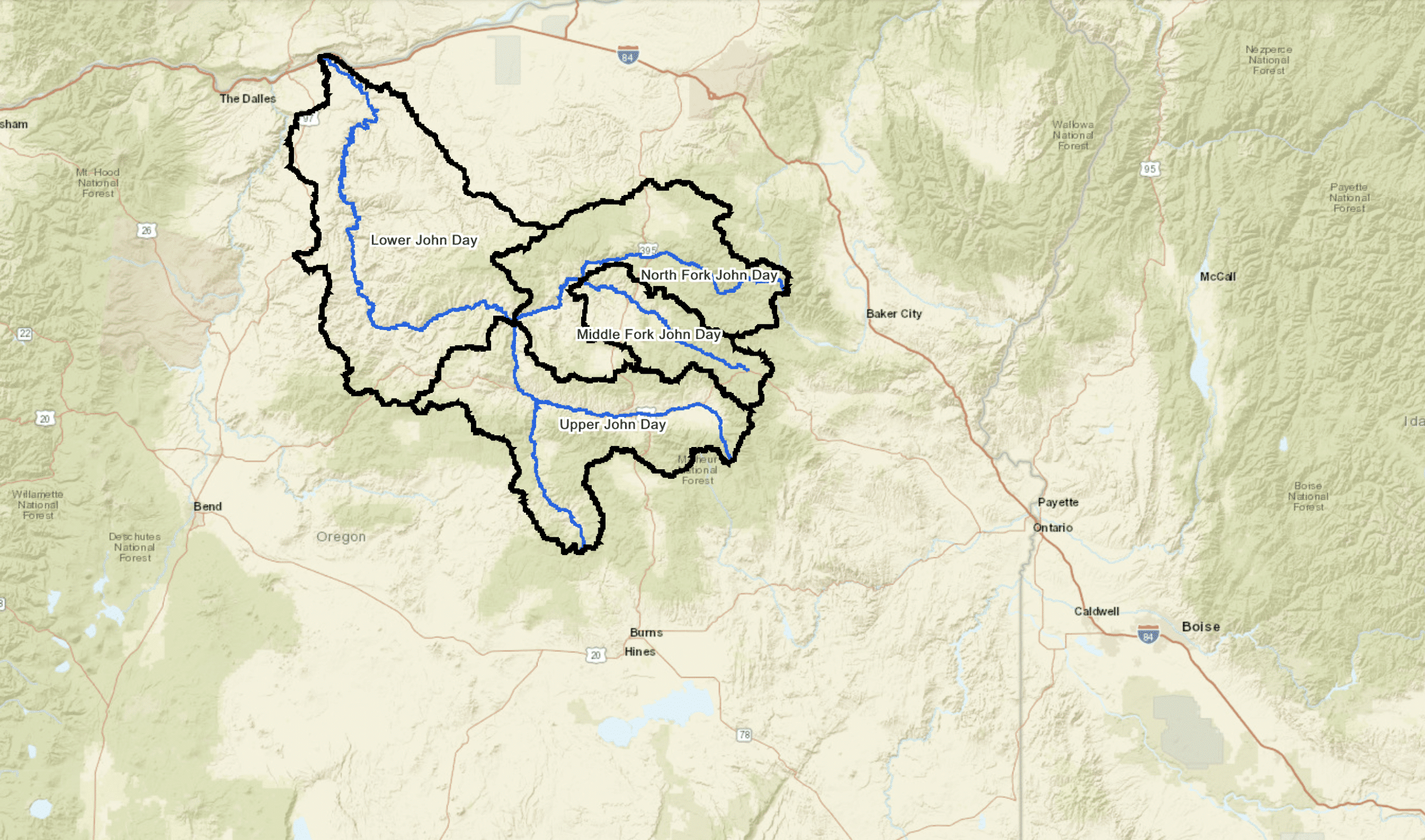The John Day
A quilt of blue shadows and rust-colored hills, trees and tributaries is stitched together by the second longest free-flowing river in the continental United States. Its hillsides and rock cliffs, verdant vegetation and dry sagebrush, skies and depths are steeped in history and hold rarities. And beyond its natural value, the river gives life to a vibrant ranching community. The Freshwater Trust’s (TFT) water quantity work in the John Day supports the environmental and economic legacy of this place.
TFT began its work here in 1995 when the organization was still a water trust. Understanding the value of the water for the steelhead and Chinook, and the fourth and fifth generation ranching families, TFT brings to the table solutions that don’t pit one against the other. Some partners work with us to shorten the length of their irrigation season or withdraw water only when certain minimum flows are met. Others voluntarily lease a portion or all of their water rights.
During 2019, TFT implemented 17 deals, and working together, they all protected more than 18,000 gallons per minute. A highlight of the year was a new 10-year lease signed with a landowner owning property along Reynolds Creek, a critical cold-water source to the Upper John Day River.
“We strategically seek out creeks that supply cold water to the system and would be particularly valuable to protect, but we also look for landowners who are willing to make longer term agreements with us,” said Meg Belais, program operations leader at TFT. “The new lease has both.”
Belais is currently in pursuit of new water deals on priority tributaries and the upper mainstem of the John Day and working to convert existing leases to long-term or permanent leases. In addition to leasing, TFT has had success preventing fish kills and ensuring enough water flows through the system during the hottest and driest days by building a program founded upon existing data-driven models that combine streamflow and climate information to forecast water temperatures. When the model predicts water temperatures to increase to a degree harmful for native fish, an alert allows irrigators to prevent additional water from being removed. TFT first used this type of model with great success to prevent fish kills during unusually hot days in Fifteenmile Creek, a tributary of the Columbia River. Started in 2013, nearly 20 irrigators are participants in that program, which is now administered by Wasco County Soil and Water Conservation District.
By the end of 2020, Belais and the rest of the team at TFT will also have completed a feasibility study, funded by the Oregon Department of Water Resources, to identify ditch and on-farm irrigation upgrade projects that will save additional water. The results will guide funding to the highest priority projects with the greatest quantified impact.
“Data is at the heart of all our decision making, whether improving water quality or quantity,” said Belais. “Information yields impacts.”

A quilt of blue shadows and rust-colored hills, trees and tributaries is stitched together by the second longest free-flowing river in the continental United States. Its hillsides and rock cliffs, verdant vegetation and dry sagebrush, skies and depths are steeped in history and hold rarities. And beyond its natural value, the river gives life to a vibrant ranching community. The Freshwater Trust’s (TFT) water quantity work in the John Day supports the environmental and economic legacy of this place.
TFT began its work here in 1995 when the organization was still a water trust. Understanding the value of the water for the steelhead and Chinook, and the fourth and fifth generation ranching families, TFT brings to the table solutions that don’t pit one against the other. Some partners work with us to shorten the length of their irrigation season or withdraw water only when certain minimum flows are met. Others voluntarily lease a portion or all of their water rights.
During 2019, TFT implemented 17 deals, and working together, they all protected more than 18,000 gallons per minute. A highlight of the year was a new 10-year lease signed with a landowner owning property along Reynolds Creek, a critical cold-water source to the Upper John Day River.
“We strategically seek out creeks that supply cold water to the system and would be particularly valuable to protect, but we also look for landowners who are willing to make longer term agreements with us,” said Meg Belais, program operations leader at TFT. “The new lease has both.”
Belais is currently in pursuit of new water deals on priority tributaries and the upper mainstem of the John Day and working to convert existing leases to long-term or permanent leases. In addition to leasing, TFT has had success preventing fish kills and ensuring enough water flows through the system during the hottest and driest days by building a program founded upon existing data-driven models that combine streamflow and climate information to forecast water temperatures. When the model predicts water temperatures to increase to a degree harmful for native fish, an alert allows irrigators to prevent additional water from being removed. TFT first used this type of model with great success to prevent fish kills during unusually hot days in Fifteenmile Creek, a tributary of the Columbia River. Started in 2013, nearly 20 irrigators are participants in that program, which is now administered by Wasco County Soil and Water Conservation District.
By the end of 2020, Belais and the rest of the team at TFT will also have completed a feasibility study, funded by the Oregon Department of Water Resources, to identify ditch and on-farm irrigation upgrade projects that will save additional water. The results will guide funding to the highest priority projects with the greatest quantified impact.
“Data is at the heart of all our decision making, whether improving water quality or quantity,” said Belais. “Information yields impacts.”

Want to help The Freshwater Trust and the John Day River Basin Partners keep working on the John Day? Make a gift today.
Donate now







